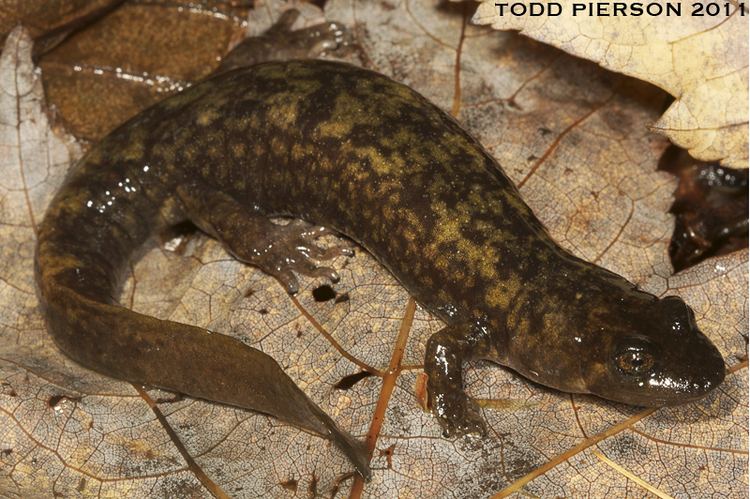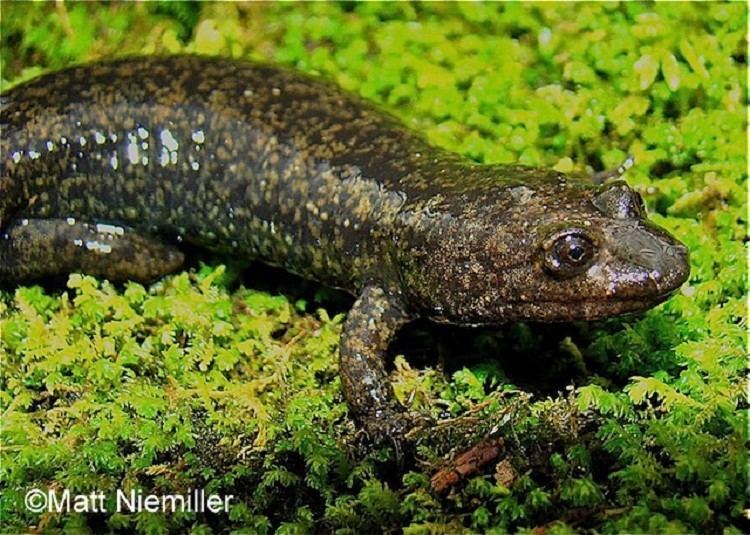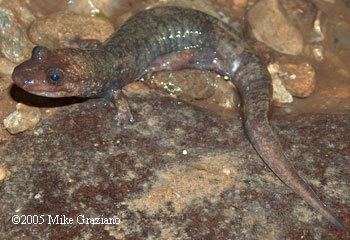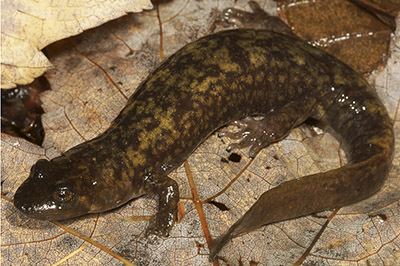Family Plethodontidae Phylum Chordata Order Salamander | Subfamily Plethodontinae Scientific name Desmognathus marmoratus Rank Species | |
 | ||
Similar Desmognathus, Salamander, Blackbelly salamander, Imitator salamander, Santeetlah dusky salamander | ||
The shovelnose salamander (Desmognathus marmoratus) is a species of salamander in the family Plethodontidae. It is endemic to the United States.
Contents

Description

The shovelnose salamander is a robust species, broad with a relatively short tail. It receives its name from the shape of its snout which is more square ended than as seen in other salamanders in its genus. The colour is a dusky brown, grey or black with two longitudinal rows of paler small patches and many smaller pale speckles. The underside is usually grey.
Distribution and habitat

The shovelnose salamander is found in the Appalachian Mountains in southeastern United States at 300 to 1,680 metres (980 to 5,510 ft) above sea level. Its range includes the states of West Virginia, Virginia, Tennessee, North Carolina and Georgia. It is found in shallow, flowing water, rapids and riffles on gravel and rocky substrates, but is not found in silted streams.
Behaviour

The shovelnose salamander is an aquatic species, living and feeding in moderately fast-flowing streams. Although it shares its range with the blackbelly salamander (Desmognathus quadramaculatus), the two species come into contact little, because the blackbelly mostly lies half out of the water and forages on land. The shovelnose salamander does not have a fixed home range nor exhibit territorial behaviour as does the blackbelly.

Breeding takes place in late spring and early summer. The female attaches eggs singly or in small clumps to the underside of a rock in moving water. The eggs hatch after about eleven weeks and the larvae hide among the gravel particles and feed on aquatic invertebrates. They undergo metamorphosis into adults at two to three years of age and mature at about five.
Status

The shovelnose salamander is listed as being of "Least Concern" by the IUCN Red List of Threatened Species. This is because it is presumed to have a large population and any decline in numbers is slow. It is affected by silting of the streams in which it lives through logging, agriculture and impoundment but occurs in a number of protected areas. Numbers are also reduced by its use by fishermen as bait.
